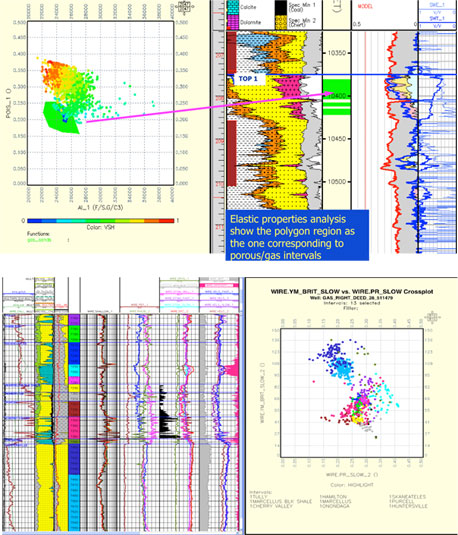We can begin by running detailed Petrophysics and a Rock Physics analysis to evaluate the best seismic attributes to characterize fractures and for hydrocarbon discrimination. Available core analysis is used to help calibrate the log data and results. Various log combinations can be used to estimate near well bore fracture intensity and orientation – the uncertainty depends on what data is available.
The well data is loaded, environmentally corrected, and edited to minimize errors. Pseudo curves are generated to add missing curves, and to extend and correct existing data. Multi-mineral analysis is used to estimate bulk volume of shale, total porosity, secondary porosity, water saturation, mineral volumes and clay types.
AI, EI, PR, Lambda, Mu, Shale brittleness, Shale TOC, Young’s Modulus, Bulk Modulus, Rüger (AVAZ), Fracture Intensity and orientation (requires “X“–“Y” Shear and orientation) are also calculated. These data are cross-plotted in various combinations to determine the best attributes to use and to help calibrate the seismic data.
Seismic forward modeling is used to provide the correlation with the real seismic gathers and to run quantitative analysis of the fracture system.
Petrophysical Analysis of Well Logs:
- Fluid substitutions (for 2 zones)
- Rock physics
- Forward modeling for AVO
- AVO inversion of synthetic gathers
- Cross-plot interpretation of synthetic AVO traces.
Angle Stack Creation:
- Selection of appropriate angle mutes based on:
- Petrophysical analysis; Gassmann Fluid substitution
- Synthetic offset gathers
- Maximum of 3 including reciprocal depending on azimuth distribution in the survey
- Selection of angle ranges for angle stack creation per azimuth range
